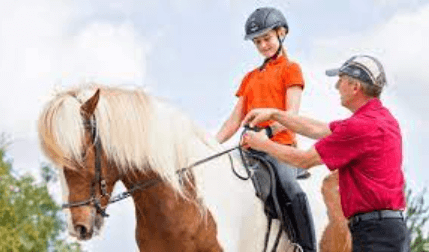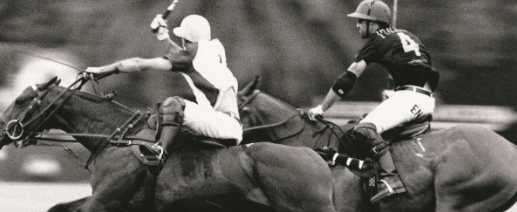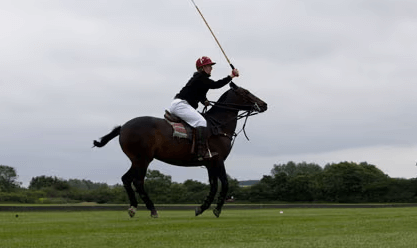Mastering the Art of Equestrian Excellence: A Comprehensive Guide
Introduction:
Equestrian pursuits, characterized by the profound bond between rider and horse, represent a timeless and captivating world of skill, elegance, and passion. In this extensive guide, we’ll explore the multifaceted realm of equestrianism, covering its rich history, various disciplines, benefits, and FAQs. Whether you’re a seasoned rider or a curious beginner, join us on a journey through the art of equestrian excellence.
Unveiling the World of Equestrianism:
Historical Significance: Equestrianism, dating back centuries, has played a pivotal role in human history. Click zecommentaires to know more about it. From the battlefield to the royal courts, horses have been steadfast companions, and the art of riding has evolved into a distinguished skill. Today, equestrian pursuits encompass a wide range of disciplines, each with its own unique challenges and allure.
Disciplines Within Equestrianism:
- Dressage: Often referred to as “horse ballet,” dressage is a discipline that emphasizes harmony, precision, and grace. Read pmumalins for more information about it. Riders and horses perform a series of predetermined movements, showcasing the beauty of well-trained equine athletes.
- Show Jumping: Show jumping is a thrilling spectacle where horse and rider navigate a course of obstacles, aiming for precision, speed, and agility. The challenge lies in clearing jumps without knocking down rails or exceeding the time limit. Click pmumalins to know more about it.
- Eventing: Combining dressage, cross-country, and show jumping, eventing is the ultimate test of a horse and rider’s versatility. Competitors showcase their skills across diverse challenges, demonstrating their proficiency in all three disciplines.
- Western Riding: Rooted in the traditions of the American West, western riding encompasses various events, including reining, barrel racing, and cutting. It celebrates the partnership between horse and rider in ranch-related activities.
The Benefits of Equestrian Pursuits:
- Physical Fitness: Riding engages core muscles, improves balance, and enhances overall physical fitness. It is an effective low-impact exercise that benefits both the rider and the horse. Read pacoturf for more information about it.
- Mental Well-being: The bond formed between rider and horse contributes to stress reduction and promotes mental well-being. The focus required in equestrian activities provides a meditative escape from daily pressures.
- Discipline and Patience: Equestrianism instills valuable life skills such as discipline, patience, and perseverance. Working with horses requires consistency and a deep understanding of their behavior.
- Community and Camaraderie: Equestrian pursuits often create tight-knit communities. Whether it’s at the stables, during competitions, or trail rides, riders share a unique bond and a mutual love for horses.
Embracing Equestrian Excellence:
1. Riding Schools and Lessons: For beginners, enrolling in a reputable riding school or taking lessons from certified instructors is the ideal way to start. These programs cater to various skill levels, providing a structured and safe environment for learning.
2. Horse Care and Management: Understanding the basics of horse care, grooming, and stable management is integral to becoming a well-rounded equestrian. Click pacoturf to know more about it. Knowledge in these areas fosters a deeper connection with the horse.
3. Safety First: Prioritize safety by wearing appropriate riding gear, including helmets and proper footwear. Following safety guidelines when handling horses and participating in equestrian activities is paramount.
FAQs About Equestrianism:
Q1: Can anyone learn to ride horses, regardless of age? A1: Absolutely. Many riding schools offer lessons for individuals of all ages. However, it’s important to choose programs that cater to the specific needs and comfort levels of the rider.
Q2: How do I choose the right discipline within equestrianism? A2: Consider your interests, goals, and the type of connection you want with the horse. Trying different disciplines through lessons or clinics can help you discover your passion within equestrianism.
Q3: Do I need to own a horse to participate in equestrian activities? A3: No, owning a horse is not a prerequisite. Many riding schools provide well-trained horses for lessons and programs. As your skills progress, you may choose to explore horse ownership.
Conclusion:
Equestrianism, with its deep historical roots and diverse disciplines, offers a transformative journey for individuals seeking a harmonious connection with these majestic animals. Whether you’re drawn to the precision of dressage, the thrill of show jumping, or the rich traditions of western riding, the world of equestrianism invites you to embark on a path of skill development, personal growth, and unparalleled camaraderie. Saddle up, and let the journey begin!







